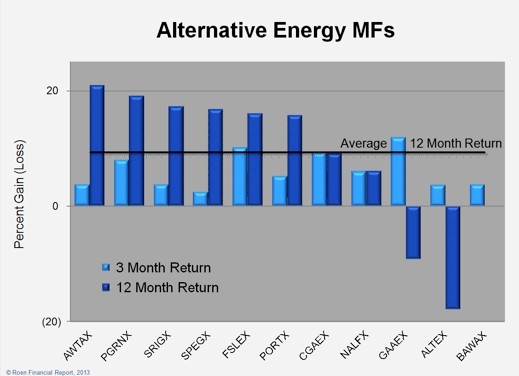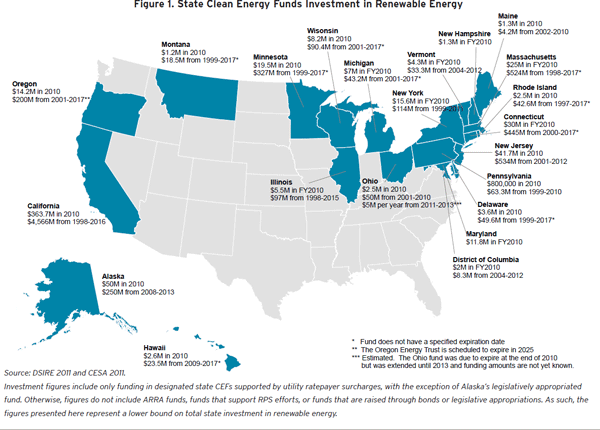Energy Funds
Post on: 3 Июль, 2015 No Comment

Use Mutual Funds to Invest in Oil
Do you think oil prices are heading down anytime soon? Me neither!
If it’s true that high oil prices have become a fact of life, this may be a good time to check out investing opportunities in the oil sector. Here are some ideas for doing it with mutual funds.
Mutual funds offer advantages over individual stocks in instances such as this when you’re expecting an entire sector to move up.
When you buy a fund, you are, in effect, hiring the fund manager whose day job is tracking of changing market conditions. Also, since most funds own dozens, if not hundreds of stocks, you’ll enjoy the advantages of automatic diversification. That way, one bad stock won’t ruin your returns.
Screen for Best Prospects
I used Morningstar’s free mutual fund screener to find the mutual fund candidates in the energy sector. If you’re not familiar with the term, a screener is a program that scans through the entire universe of stocks or mutual funds to find those meeting your specific requirements.
I picked Morningstar’s fund screener because it’s free and anyone, even the most technically challenged, will find it easy to use. Get there from Morningstar’s homepage (www.morningstar.com ) by selecting Funds. and then Mutual Fund Screener listed under Morningstar Tools. I’ll describe my screen, but you may want to alter my requirements to suit your needs.
Select Screening Criteria
Start by using the Morningstar Category dropdown menu to select Specialty—Natural Resources, which rules out all funds except those holding mostly natural resource stocks.
Next, use the Load Funds dropdown menu to specify, “No-load funds only.” Loads are charges subtracted from your investment, usually when you purchase a fund, to pay the broker or investment advisor who recommends the fund. Since these charges reduce your returns, there’s no point in paying a load if you’re picking funds on your own.
Morningstar rates funds from one to five stars, where five is best. The ratings compare historical returns to historical volatility (risk). Use the Ratings and Risk checkboxes to require Morningstar four- or five-star rated funds. By limiting your selection to four stars or better, you’re avoiding the highest risk funds.
Finally, use the YTD (year-to-date), 1-Year Return, 3-Year Return, and 5-Year Return dropdown menus to specify “greater than or equal to category average” for each of the four timeframes. By doing that, you’re limiting the field to funds that have consistently outperformed the natural resources category average for at least the past five years.
The 5-year requirement precludes funds that haven’t been in existence that long. However, the oil sector only started outperforming around two years ago. By adding the 5-year requirement, you’re limiting the field to funds that outperformed when the sector was in the doldrums, as well as during boom times. That gives you some insurance, just in case we’re wrong, and oil prices go down instead of up. Delete the 5-year requirement if your screen doesn’t turn up enough funds.
Look at Historical Returns
After you’ve entered your search rules, click on Show Results to see the list of passing funds. Use the dropdown menu to change from the default Snapshot display to the Performance view, which lists the year-to-date and average annual returns for periods up to 10 years, if the fund has been around that long.
Morningstar listed eight funds when I ran the screen. However, on inspection, I found that five (AIM Energy, Ivy Global Natural Resources, Ivy Global Natural Resources A, Jennison Natural Resource, and Van Eck Global Hard Assets) were either closed or not available through discount brokers.
Only Three Survivors
That left me with three available funds, ICON Energy (ticker symbol ICENX), U.S. Global Investors Global Resources (PSPFX), and Vanguard Energy (VGENX). Vanguard Energy requires a $25,000 opening investment, which may be too high for many investors. U.S. Global requires $5,000 but you can start with the ICON fund with only $1,000 (Disclosure: I control positions in the ICON and Vanguard funds).

Of the three, according to Morningstar, U.S. Global Investors, which averaged an eye-popping 56 % average annual return over the past three years, and 40 % annually over five years, has been the best performer.
Vanguard and ICON both averaged annual returns of 42 % over the past three years, and around 25 % over five years.
What About ETFs?
I also checked the performance of exchange-traded funds (ETFs) specializing in energy stocks. ETFs are similar to index mutual funds, except they trade like stocks. I used Morningstar’s ETF screener (click on ETFs on the top menu, and then select ETF Screener) to list ETFs in the natural resource category.
Of the 17 ETFs listed for the category, only five have been around long enough to accumulate three-year track records, and of those, three have been in existence at least five years.
The energy ETFs haven’t produced returns comparable to the top performing actively managed mutual funds.
The best ETFs were the Energy Select SPDR fund (ticker symbol XLE) and the Oil Services HOLDRs fund (OIH). Both averaged 38 % annually over the past three years, good, but far short of U.S. Global’s 56 %. Over five years, Oil Services HOLDRs was the best ETF, averaging 18 % annually, again, not comparable to the top managed mutual funds.
Don’t Put All Your Eggs In One Basket
Some analysts say current oil prices reflect fears that geopolitical problems will disrupt oil supplies are keeping prices artificially high. They see prices dropping when these fears subside. Just in case they are right, don’t put all of your money into energy. A good rule of thumb is to avoid investing more than 25 % of your capital in any one sector, in this instance, energy.














